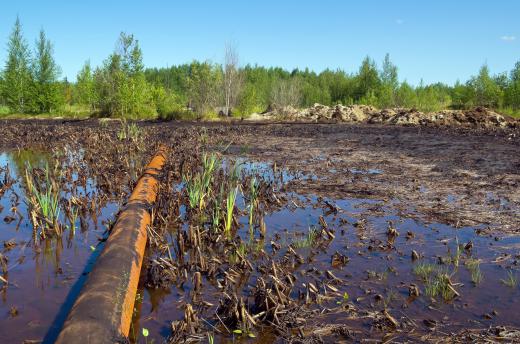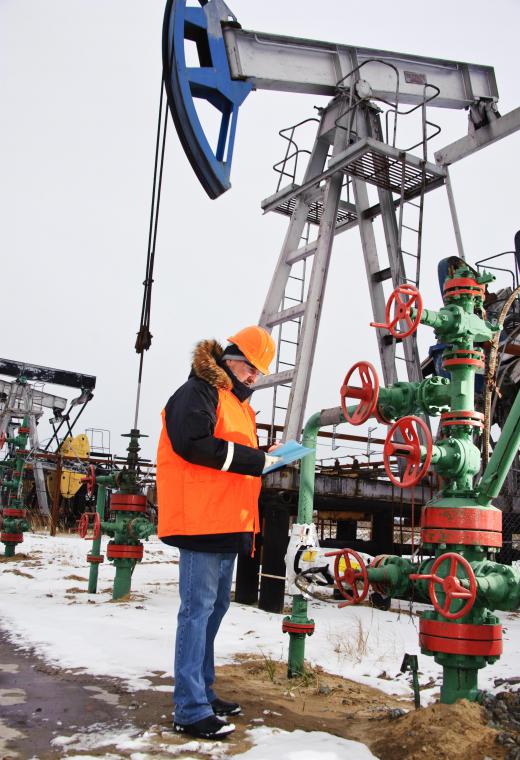Well control is a series of procedures to control conditions around a wellbore with the goal of extracting useful materials while protecting environmental health and the safety of workers. Companies performing oil and gas drilling, exploration, and related tasks must comply with regional laws surrounding well control, including providing information about the procedures they use to inspectors. Inspectors can evaluate a well at any time on surprise visits as well as make regular inspections on a schedule.
There are two separate components to well control: active and passive measures. Active measures involve monitoring conditions in the wellbore and making adjustments to equipment, while passive measures require the use of static equipment like blowout preventers to prevent emergency situations. It can help to imagine an oil well as a car. If the oil company is the driver, active measures are activities like adjusting the acceleration of the vehicle, while passive measures are things like seat belts to keep the driver from crashing through the window in the event of an accident.

Before oil companies start drilling, they carefully map out the geological formations in the area and develop a well control plan with the assistance of engineers. During exploration procedures, these engineers monitor levels of pressure in the well and take samples to check for issues like unstable soil or deposits of dangerous materials. As the oil company establishes a permanent wellbore, engineers design appropriate well control systems like pressure monitors and valves for controlling pressure. They also install passive measures.

Engineers can monitor wells on site in addition to following them off site, using remote transmission of data. The well control systems usually sound alarms in emergency situations like dangerously high pressure or uncontrolled release of materials, alerting workers so they can respond and correct the situation. In the case of a blowout, where a wellbore starts to release oil and gas into the environment, the response usually includes firefighting teams along with hazardous materials specialists to get the well under control and clean up the area.
A government agency is usually responsible for setting well control standards and enforcing them with the use of inspections, outreach, and education. These agencies maintain statistics on safety, and regularly evaluate them to identify emerging industry trends and areas of concern. Companies with poor safety records may have their oil and gas leases revoked or suspended until they can develop a plan to reform safety procedures. They can also incur fines for pollution or occupational health and safety violations.
Ever since she began contributing to the site several years ago, Mary has embraced the exciting challenge of being a About Mechanics researcher and writer. Mary has a liberal arts degree from Goddard College and spends her free time reading, cooking, and exploring the great outdoors.

